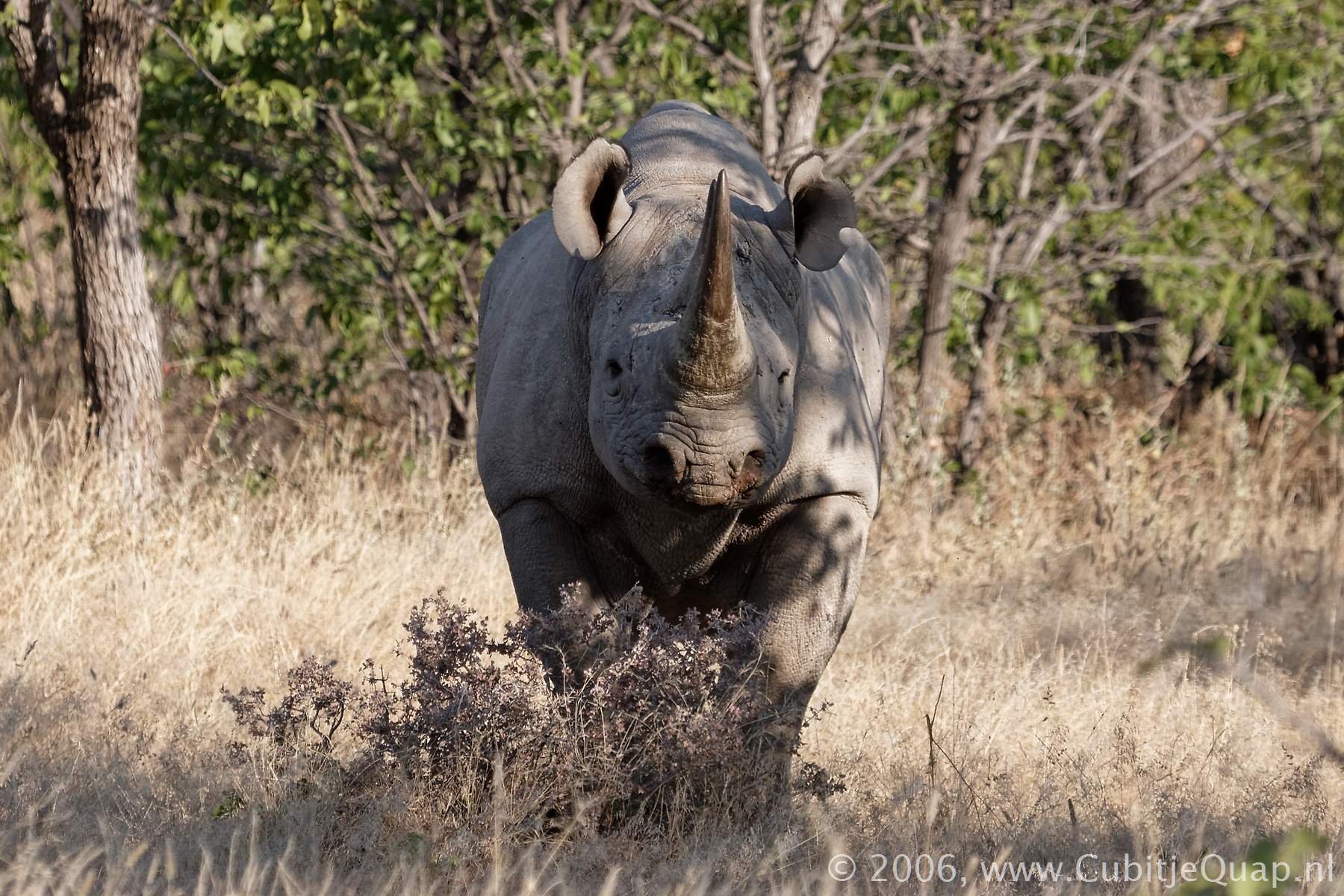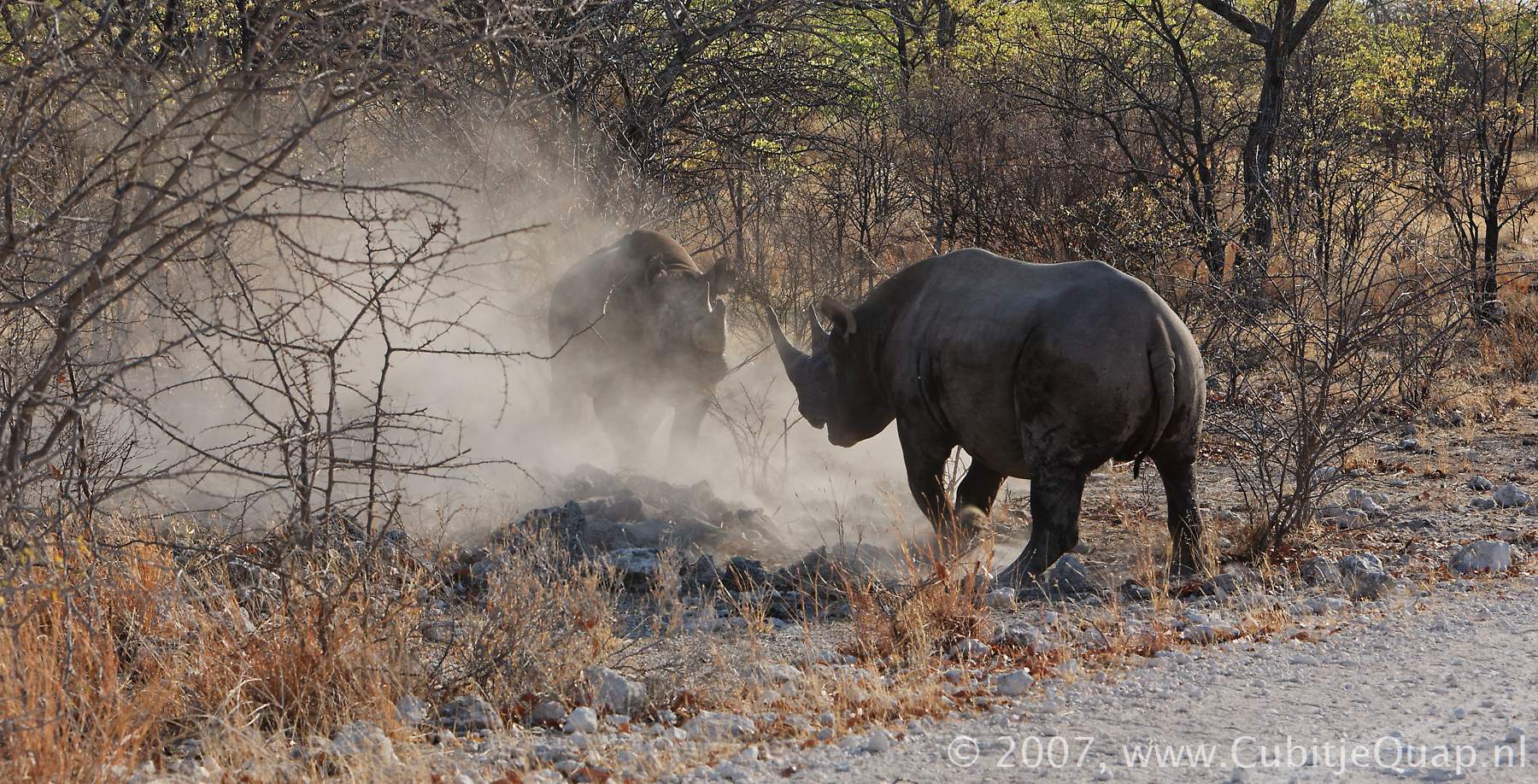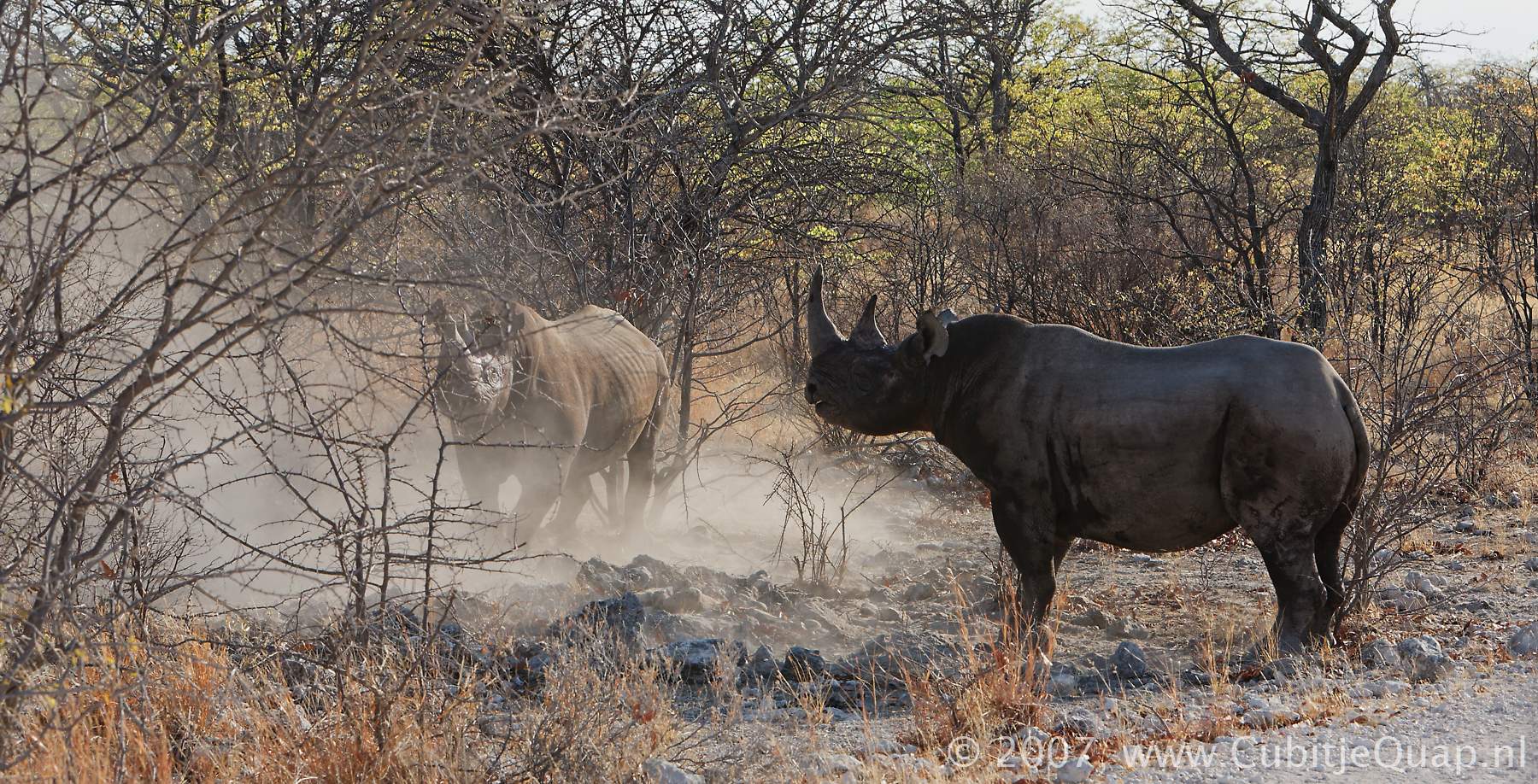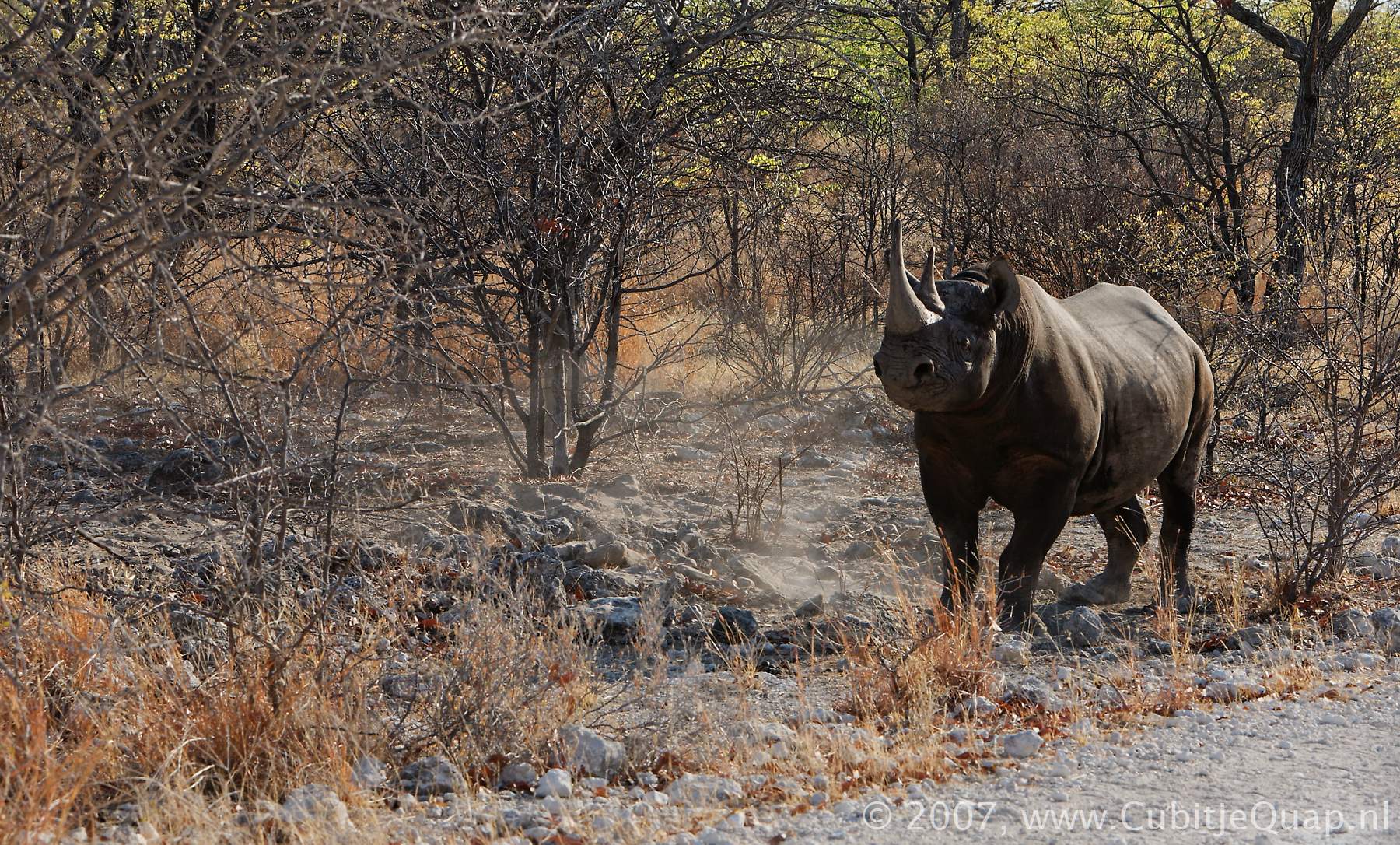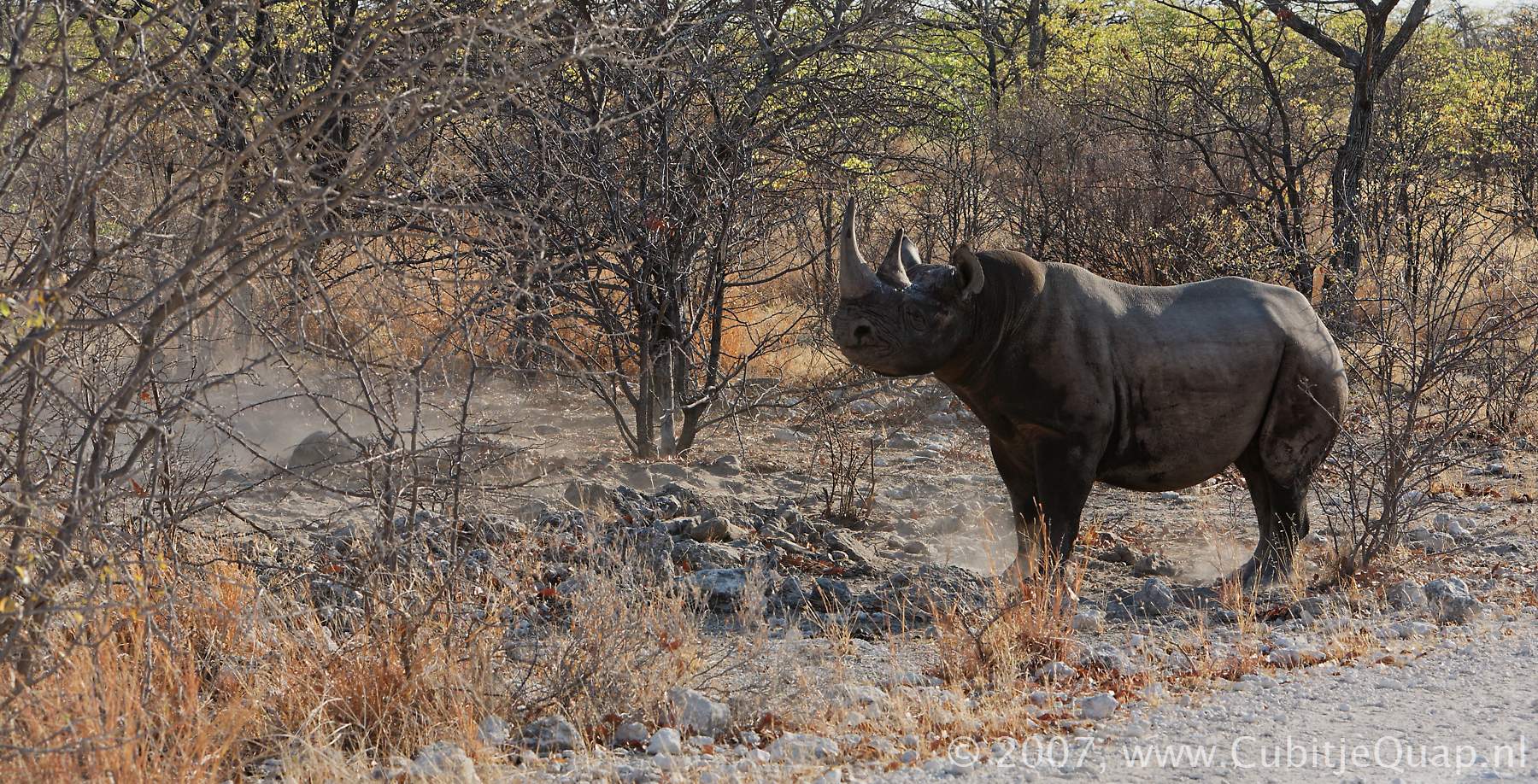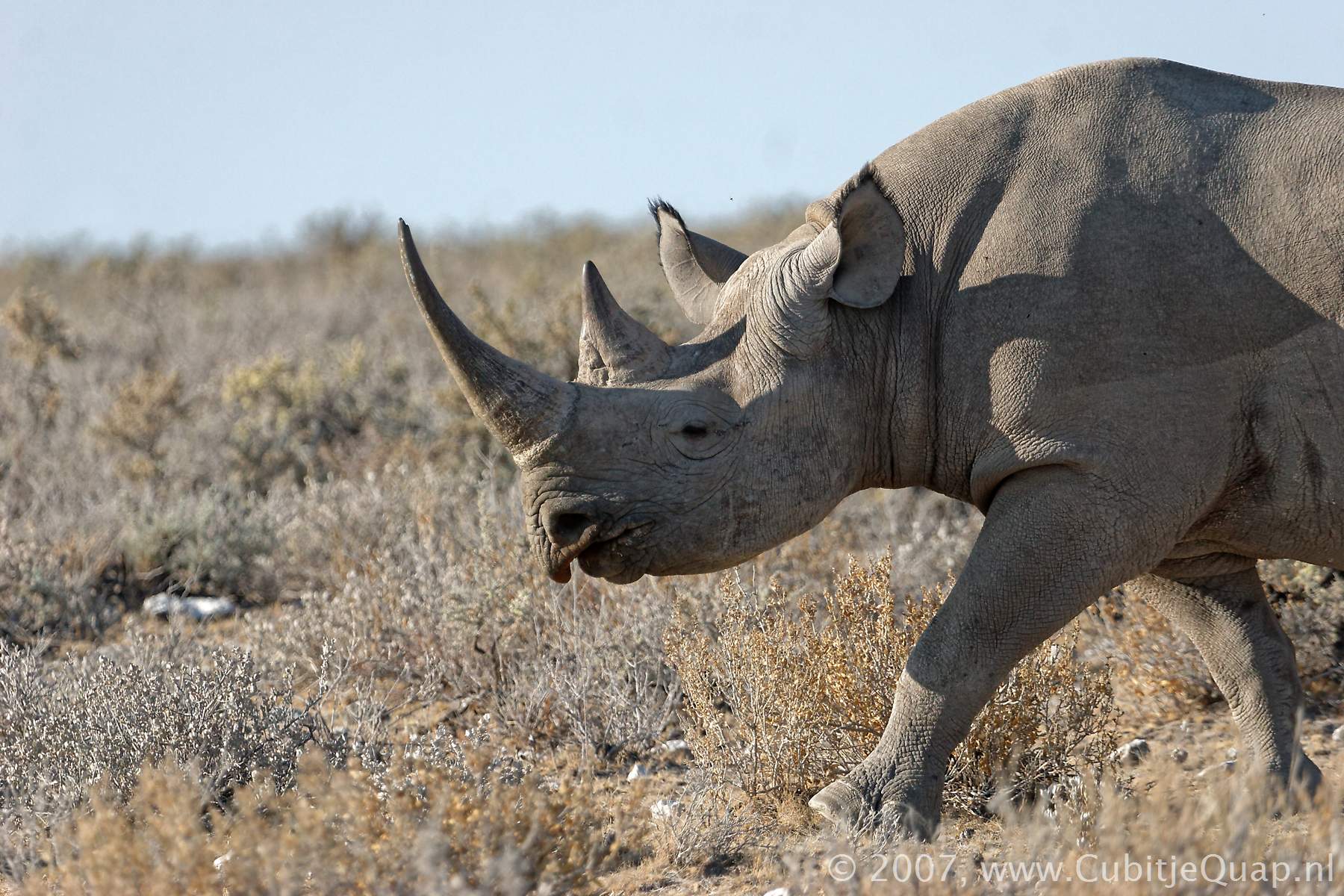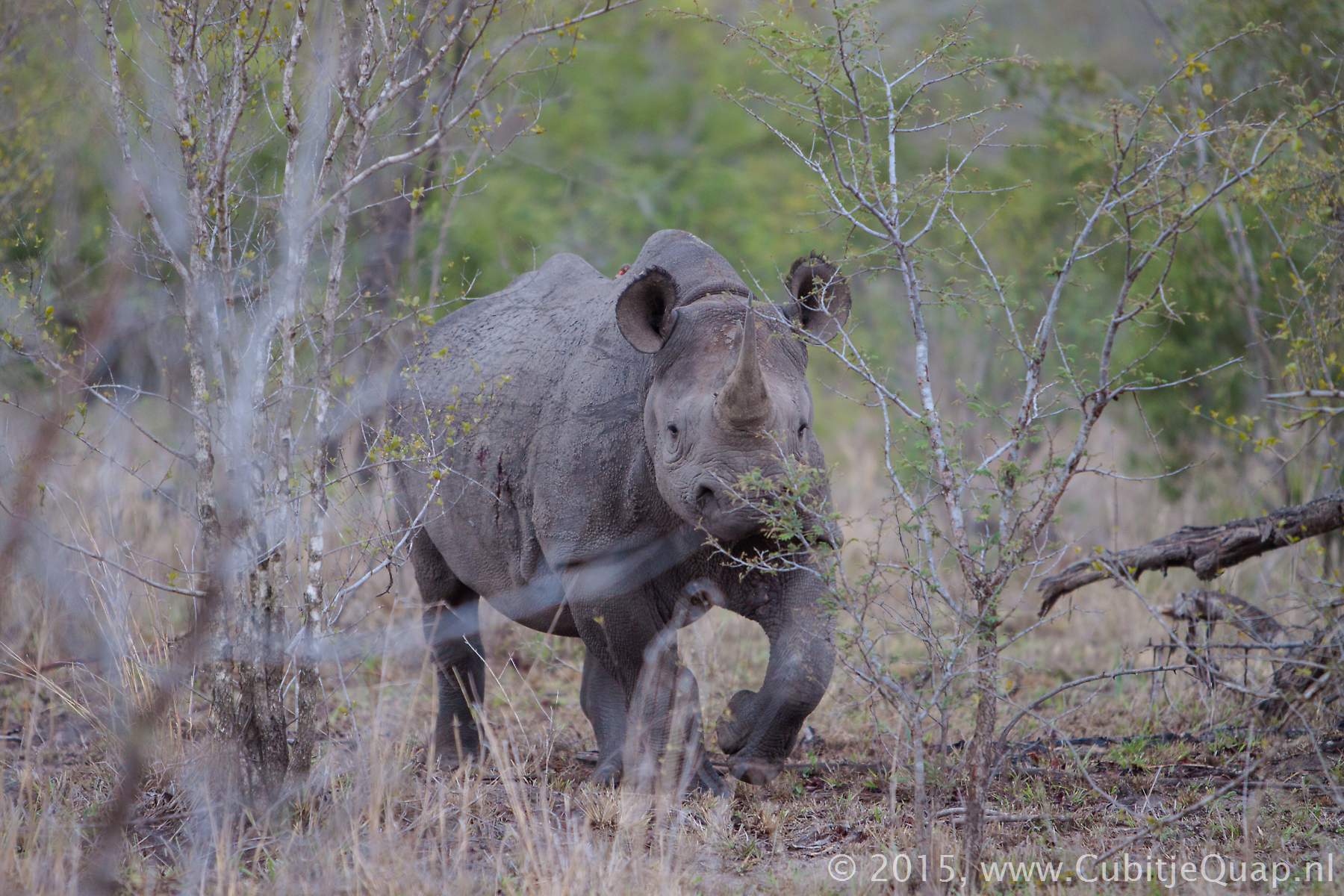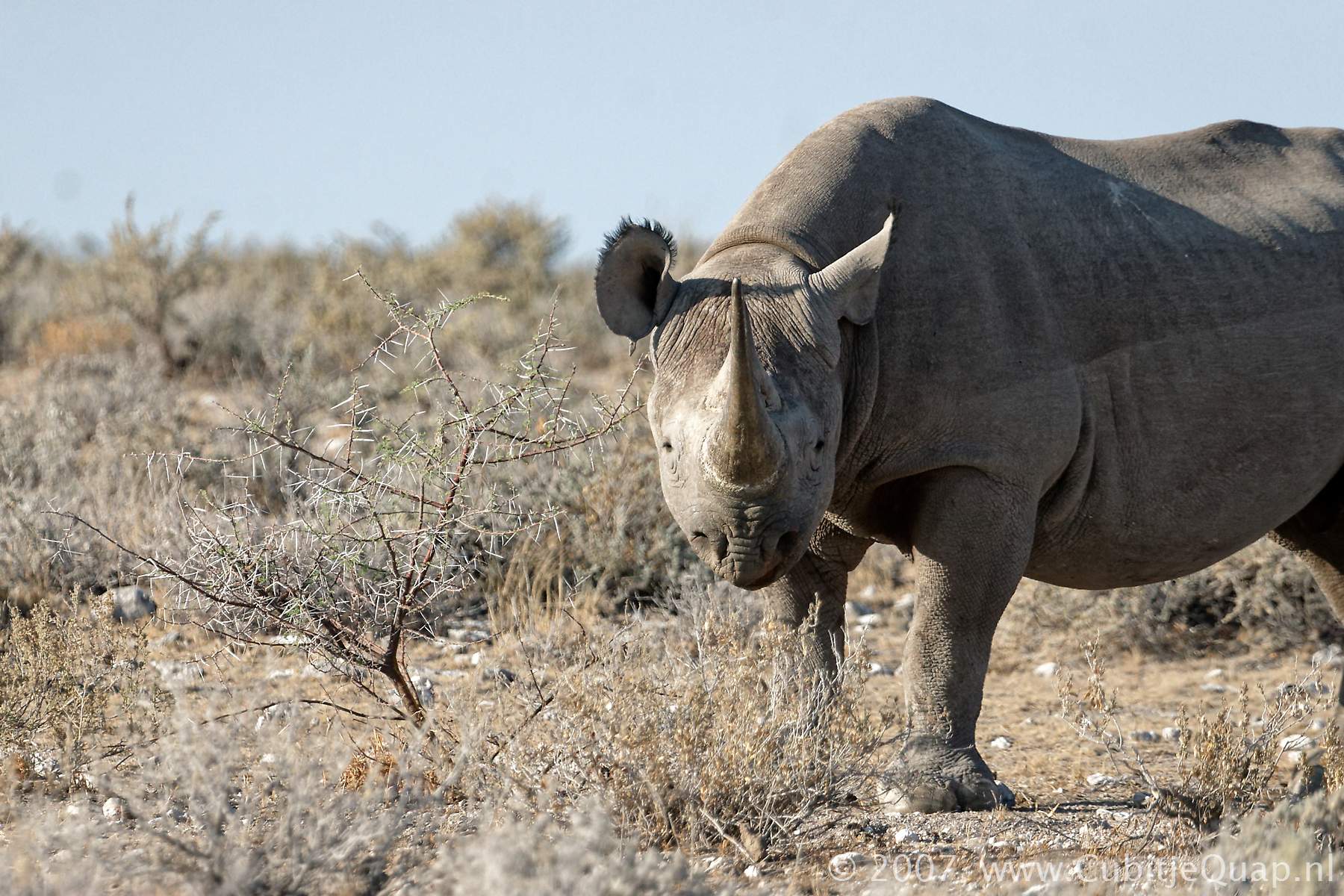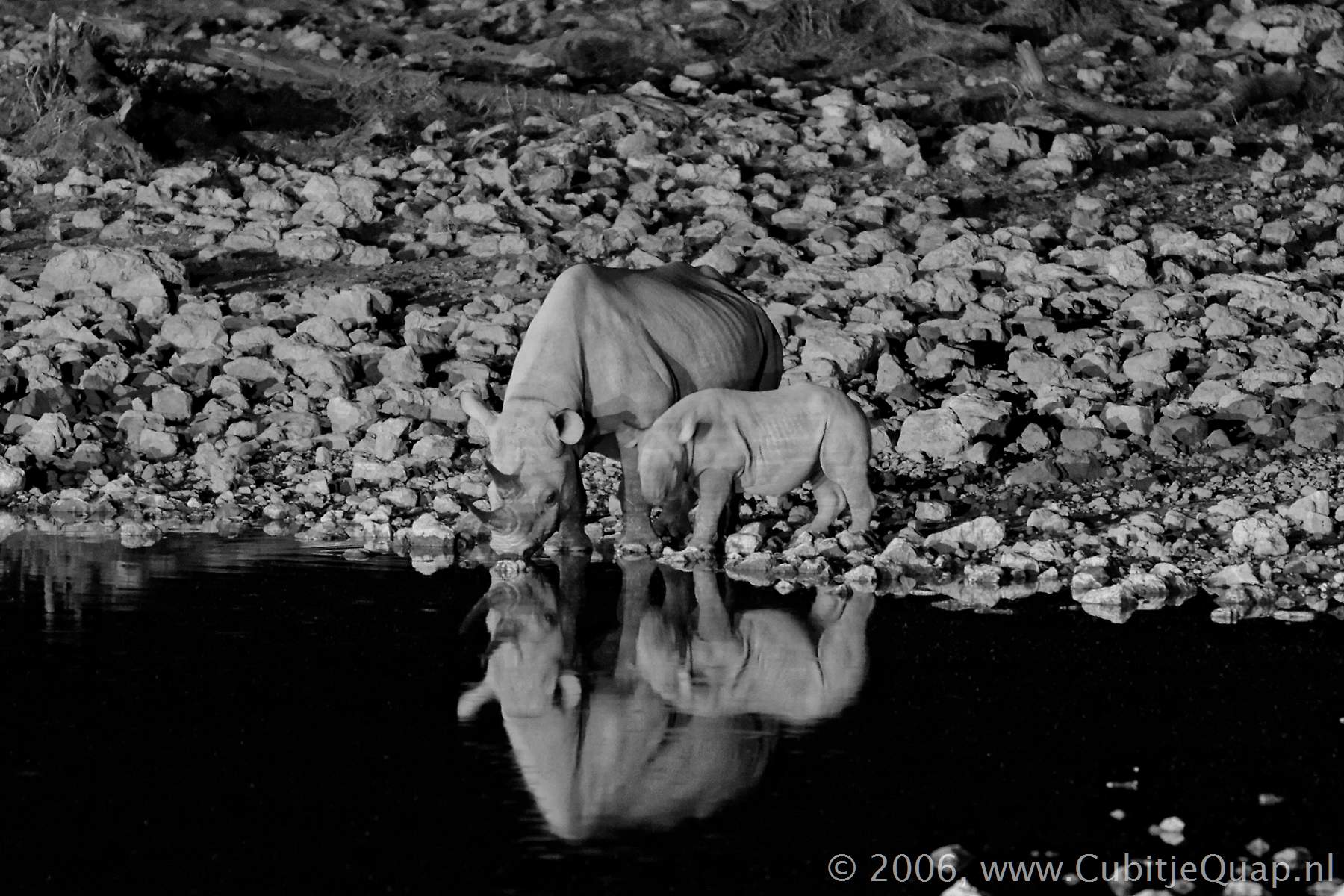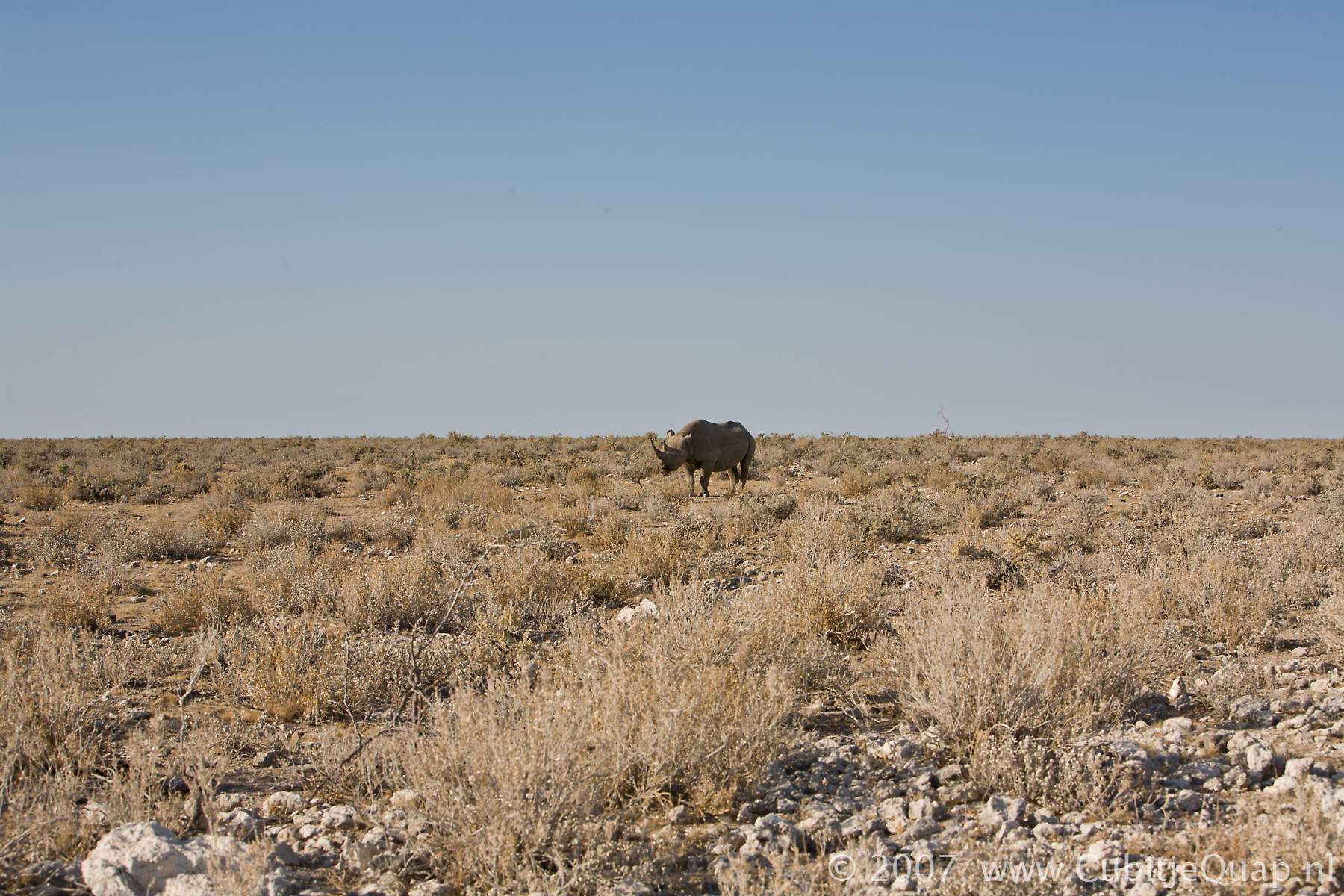Dark grey with slightly lighter upperparts. Body colour influenced by its habit of wallowing in dust and mud. Sparse scattering of body hair. No raised hump on neck, unlike the square-lipped Rhinoceros. Two horns on face, one behind other, the front horn usually beining the longer. Rhino horn is composed of numerous, matted, hair-like filaments, which are attached to the skin, not the bone; it is not a sheath-like covering to a thorny bone as is the case with antilope horns.
The black rhino can be distinguished from the white rhino by some features in its appearance. The black rhino is smaller than the white rhino It lacks the neck hump of the white rhino and it has a pointed upper lip.
They usually rest during the heat of the day, grazing in the early morning and late afternoon, or even in the dark.
Both rhino species have rapidly declined in numbers as a result of the demand for their horns. The horns were carved into dagger handles for tribesmen and were used in the production of traditional medicines.
Wikipedia - white rhino
(sc) Diceros bicornis
(nl) Zwarte neushoorn
(af) Swartrenoster

